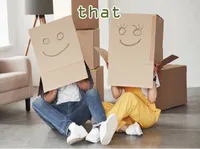
English vocabulary and phrases on Mid-Autumn Festival
that means . Learn how to pronounce and use that through vivid examples and easy-to-understand exercises.

Okay, let's break down how to pronounce "that" in English. It's a tricky one because it varies a little based on where you are from (regional accents are important!). Here's a breakdown of the most common pronunciations:
Tips for Practicing:
Resources:
To help me give you even more targeted advice, could you tell me:
Let's break down how to use the word "that" in English. It's surprisingly versatile and can have a few different roles! Here's a breakdown of the most common uses, with examples:
Key Differences and When to Use Which vs. That
This is a common point of confusion! Here's a quick guide:
| Feature | That | Which |
|---|---|---|
| Function | Introduces a clause; refers to a noun (often implies a conclusion) | Used to identify specific things within a group; introduces a non-restrictive clause (adds extra information). |
| Referent | Often replaces a noun. | Specifies a particular member of a group. |
| Example | "I know that you're busy." | “The book which I borrowed was excellent.” |
Important Rules & Notes:
Resources for Further Learning:
To help me give you even more targeted advice, could you tell me:
Fill in the blanks with the most appropriate word.
Choose the correct answer(s) for each blank. There may be more than one correct option.
Rewrite the following sentences according to the instructions.
Exercise 1: Fill in the blanks
Exercise 2: Choose the correct answer
Exercise 3: Rewrite the sentences

English vocabulary and phrases on Mid-Autumn Festival

Tips to improve vocabulary in communication

English vocabulary by topic: Clothes

The secret to remembering all 50 English vocabulary words every day easily

English vocabulary by topic: Human body

Vocabulary of the most popular subjects in English

Learn English about Covid: All about vocabulary and disease prevention

Vocabulary of Subjects in English

Set of 60 English vocabulary on educational topics

Vocabulary - just a small thing!
Comment ()